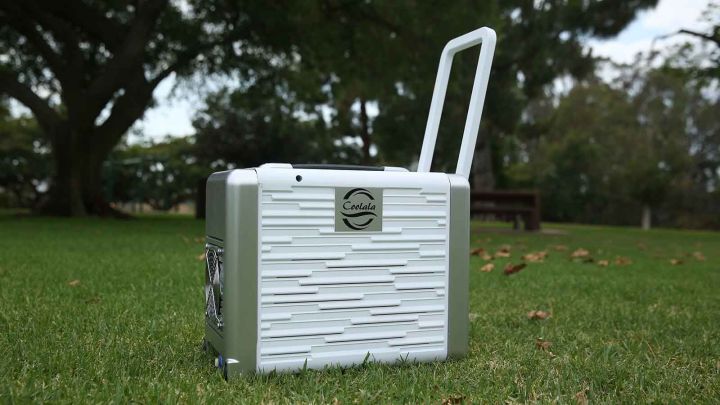
Part of its portability is derived from its diminutive size. Just 16 by 3.5 by 12 inches, this is a truly mini AC unit. But rest assured, it’ll do a lot more for you than a hand-held fan. It weighs in at seven pounds and comes complete with wheels and a handle (in case you don’t want to, you know, carry it). And most importantly, it claims 3,500 BTU of cooling power, which means that you can cool an area of up to 150 square feet. Once the sun has fully powered up its battery, the Coolala claims to be able to provide some relief from the heat for between six to eight hours.
In addition to its AC capabilities, the Coolala also comes with a built-in LED lamp, so you can keep cool even in the dark. It also features a power station — because what’s the use of staying cool if you can’t be on your phone, too? While this portable unit seems to be best suited for outdoor use, you can also take it inside — just plug it into an outlet using the supplied power adapter. And if you’re outside, you can either connect to the 100-watt solar panel, or use the 40,000mAh or 60,000mAh power station with 12V to 24V of charging power.
Clearly, the notion of cool air on the go has captured the imagination of plenty of Kickstarter backers, as the Coolala has already surpassed its initial fundraising goal, raising more than $30,000 with over six weeks left in its campaign. You can pre-order a Coolala for $442, with estimated delivery slated for June 2018, in time for next summer.


